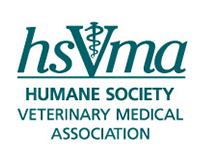Feline Frenzy Comes to Oregon State UniversityDecember 13, 2010 by Leslie Dunham The Oregon State University Chapter of the Humane Society Veterinary Medical Association (HSVMA) recently hosted a lunch presentation on the topic of the veterinary professional’s role in curbing the feral cat overpopulation crisis. Dr. Susan Krebsbach, a Wisconsin veterinarian and HSVMA veterinary consultant, discussed the current techniques for feral cat population control and recommended ways that veterinary professionals and students can get involved. The presentation began with an introduction of the most common concerns associated with feral cat populations, including the effect on the environment and the risk of rabies. Dr. Krebsbach then discussed the Trap-Neuter-Return (TNR) technique, a popular means of feral cat population control and the only scientifically-proven way of reducing feral and free-roaming cat populations. This technique involves trapping the cat, neutering or spaying, and vaccinating for rabies. The ear of the cat is then tipped for identification and proof of sterilization, and he or she is returned to the caregiver. The surgery is performed like any other feline sterilization—with proper surgical technique, anesthesia, pain management, and post-operative care. Lastly, Dr. Krebsbach discussed how veterinary professionals and students can do their part in helping to reduce feral cat populations. Some suggestions included volunteering their time and services at a Feral Cat Coalition clinic, offering reduced fees for sterilizations at their own clinic, and most importantly, educating their clients and the public about the importance of sterilizing their own pets. For more information about this and the other veterinary school presentation topics offered by HSVMA, visit our website. Leslie Dunham is a student at Oregon State University CVM, Class of 2013 |
